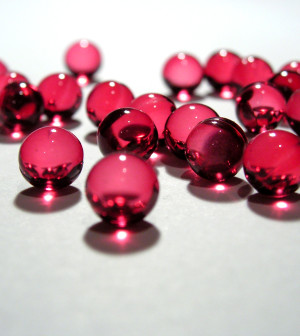- Skip Storing This Everyday Product in the Fridge Door
- Green Tea + B3 Pairing May Boost Brain Health
- Navigating Your Midlife Crisis: Embracing New Possibilities
- City Raccoons Showing Signs of Domestication
- Mapping the Exposome: Science Broadens Focus to Environmental Disease Triggers
- One Week Less on Social Media Linked to Better Mental Health
- Your Brain Changes in Stages as You Age, Study Finds
- Some Suicide Victims Show No Typical Warning Signs, Study Finds
- ByHeart Formula Faces Lawsuits After Babies Sickened With Botulism
- Switch to Vegan Diet Could Cut Your Greenhouse Gas Emissions in Half
FDA: Low Levels of Arsenic in Rice


FRIDAY, Sept. 6The levels of arsenic found in rice aren’t high enough to be a short-term concern to consumers, the U.S. Food and Drug Administration said Friday.
The agency, however, did advise people to vary the grains they eat. In addition to rice, grains such as barley, oats and wheat should be part of one’s diet. This advice includes infants and children, the agency said.
Arsenic occurs naturally in the environment, but can also result from contamination by people. Arsenic is found in water, air, soil and foods, the FDA said.
The FDA has been testing levels of arsenic in foods for more than 20 years, but stepped up its surveillance in recent years. The findings released Friday included testing of 1,100 new samples of rice, and products containing rice, in addition to 200 samples first tested in 2012.
Although the levels of arsenic varied widely depending on the product, the FDA found that, in total, the amount of arsenic was too low to cause any “immediate or short-term adverse health effects.” The agency added, however, that it’s looking into any long-term health risks.
“These FDA data are reassuring,” said Dr. Stephen Daniels, chairman of the American Academy of Pediatrics’ Committee on Nutrition. “While there is inorganic arsenic in rice and rice products, it is at a level that should be safe for consumption across the population. Diets that follow the AAP guidelines include a variety of foods and a variety of grains and remain a healthful approach to eating for children and adolescents.”
Another doctor was more cautious about the findings.
“The FDA efforts to better characterize the extent of arsenic levels in rice should be applauded. The findings, however, suggest that while the rice products contain relatively low amounts, the levels are not insignificant,” said Dr. Jacqueline Moline, chair of population health at North Shore LIJ Health System in Manhasset, N.Y.
“Such levels are likely a combination of naturally occurring arsenic and man-made sources such as arsenic-containing pesticides and other pollutants,”she added. “While these levels were found to pose no immediate health risk, as the FDA points out, it is less clear whether there is potential for long-term risks.”
In its investigation, the FDA said it tested different types of rice, including various types of rice grain (e.g., white, jasmine, basmati) and rice products, including: infant and toddler cereals; pasta; grain-based bars; snacks, such as rice cakes; cookies and pastries; desserts and puddings; and beverages, including beer, rice wine and rice water.
Currently, there is no standard for the amount of arsenic allowable in foods, including rice, according to Consumers Union, which believes that a standard should be set.
More information
For more on arsenic, visit the U.S. Food and Drug Administration.
Source: HealthDay
Copyright © 2025 HealthDay. All rights reserved.










